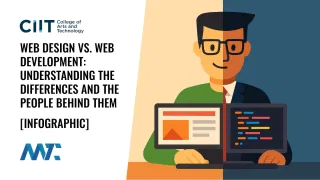Web design projects are more complex than ever, as they must bridge business goals, brand identity, and user experience (UX). One of the most overlooked but critical steps in building a successful website is the discovery process, and a thoughtfully constructed survey can make all the difference. A survey ensures that the designer understands the client’s vision, the client feels heard and involved, and the end users’ needs remain central. Without this alignment, projects risk going off-track, leading to unnecessary revisions, inflated budgets, and frustrated stakeholders.
A survey is not just a questionnaire; it’s a tool to establish clarity, set expectations, and uncover insights that may otherwise be missed. Below, we’ll break down how to structure a web design survey that works equally well for designers, clients, and users.
Table of Contents
Why Web Design Surveys Are Important
From the designer’s perspective, a survey minimizes ambiguity and provides a roadmap for creative and technical decisions. From the client’s perspective, it forces strategic thinking about objectives, audience, and priorities before development begins. From the user’s perspective, a survey indirectly ensures that their expectations for usability, accessibility, and aesthetics are anticipated and incorporated into the design.
Today, websites serve as the centerpiece of digital ecosystems, integrating with apps, AI-driven personalization, and multi-device user journeys; the need for clarity has never been greater.
Business Goals and Objectives
Every website project must begin by clarifying what success looks like. Without defining goals, design becomes subjective, and evaluation becomes impossible.
- Primary objective: What is the main purpose of this website (e.g., lead generation, e-commerce, brand awareness, customer support)?
- Success metrics: How will you measure whether the site is successful (e.g., traffic growth, conversion rate, reduced support calls)?
- Top priorities: What three outcomes are most important to you for this project?
Audience and Users
Understanding the intended audience ensures that the site is not only visually appealing but also functional for real people. Clients often have assumptions about users, while designers need concrete data to inform their decisions about navigation, content, and accessibility.
- Target demographics: Who is the primary audience for this site (e.g., age, profession, location)?
- User needs: What problems are users coming to your site to solve?
- Devices and environments: What devices or platforms do you expect your users to access the site from most often?
- Accessibility expectations: Do you have requirements for accessibility compliance (e.g., WCAG 2.2 AA)?
Branding and Visual Identity
A website is one of the strongest expressions of a brand. Designers must strike a balance between creative innovation and brand consistency.
- Brand Guidelines: Do you have existing brand guidelines (logo, color palette, typography) that must be adhered to?
- Tone and personality: What adjectives best describe how you want your brand to feel online (e.g., modern, playful, authoritative)?
- Competitor comparisons: Which competitor sites do you admire or dislike, and why?
- Design inspiration: Are there websites (in or outside your industry) that inspire the look and feel you want?
Content Strategy
Today, content is inseparable from design. AI tools can generate and personalize content, but they need a framework to work effectively. Knowing what content is required shapes layout, navigation, and integrations.
- Existing content: What content already exists and can be reused?
- Content Gaps: What content needs to be created or rewritten?
- Media assets: Do you have photography, video, or illustrations, or should these be produced?
- Content Ownership: Who will be responsible for creating and maintaining content after launch?
Functionality and Features
Designers need clarity about functional expectations early on to avoid scope creep. This section also helps clients prioritize what is essential from what is optional.
- Core features: What essential features must be included (e.g., forms, e-commerce, booking tools, chatbots)?
- Third-party integrations: What systems does the site need to connect to (e.g., CRM, ERP, marketing automation, AI personalization tools)?
- Interactive elements: Do you expect features like calculators, quizzes, or interactive graphics?
- Scalability needs: Do you anticipate new features or growth within the next 2–3 years?
Technical Considerations
Modern websites must be resilient, fast, and secure. The survey should reveal technical requirements before development begins.
- Hosting preferences: Do you have a preferred hosting provider or environment (e.g., managed WordPress, cloud, headless CMS)?
- Performance expectations: What benchmarks are essential (e.g., CWV, mobile page speed)?
- Security needs: Are there specific compliance standards to meet (e.g., GDPR, HIPAA, PCI DSS)?
- Maintenance responsibilities: Who will manage ongoing updates, patches, and technical support?
Budget and Timeline
No project can succeed without aligning expectations around resources and deadlines.
- Budget range: What is your expected investment for this project?
- Phasing: Would you prefer a phased rollout or a single launch?
- Timeline: What deadlines or milestones must be met (e.g., product launches, events)?
- Flexibility: How flexible are you with time and cost if unexpected needs arise?
User Testing and Feedback
A survey should also acknowledge that user feedback will play an ongoing role in the design process.
- Testing expectations: Do you expect usability testing before launch?
- Feedback loops: How do you want to collect feedback from users post-launch (e.g., surveys, analytics, heatmaps)?
- Iteration philosophy: How often do you expect to revisit and improve the site?
A well-crafted web design survey is not a formality—it is the foundation of a successful project. From the designer’s perspective, it reduces uncertainty and sets the stage for efficient creativity. From the client’s perspective, it clarifies priorities and establishes accountability. For users, it ensures that the final site delivers intuitive and meaningful experiences.
The survey is one of the most valuable investments at the start of a project. By asking the right questions upfront, you’ll avoid costly mistakes later and build a site that serves the needs of everyone involved.
